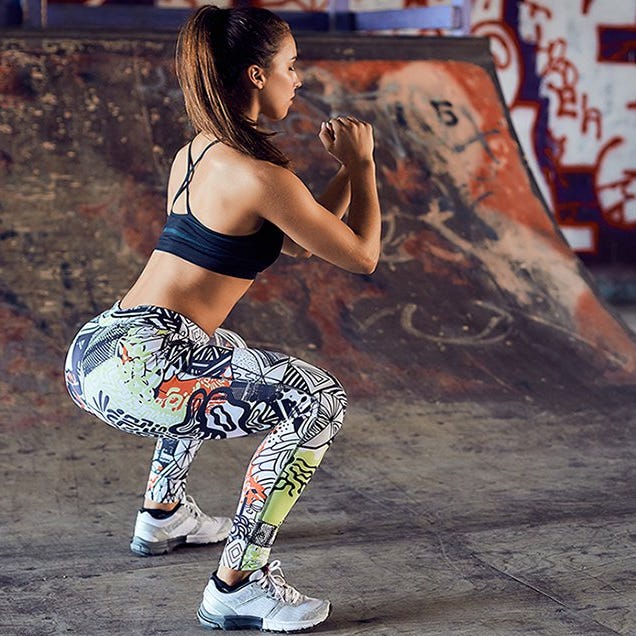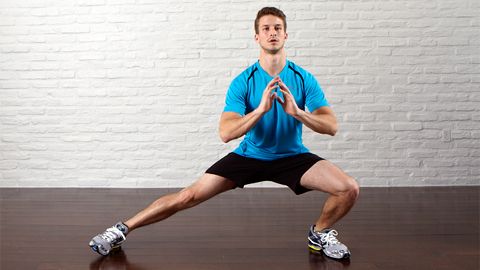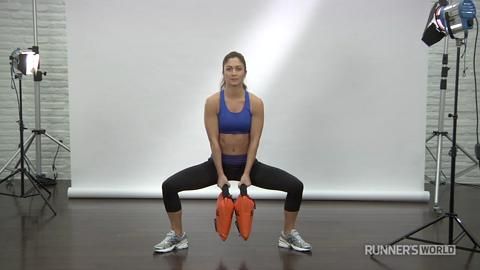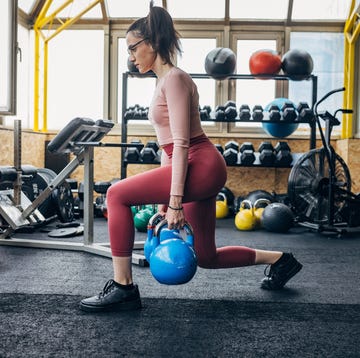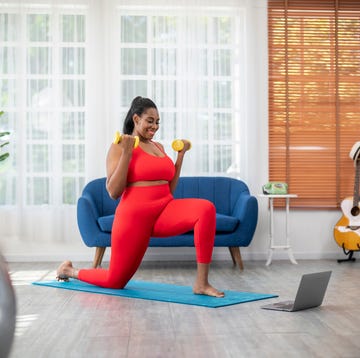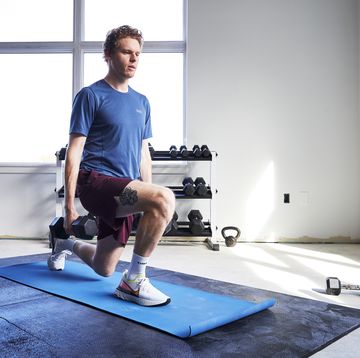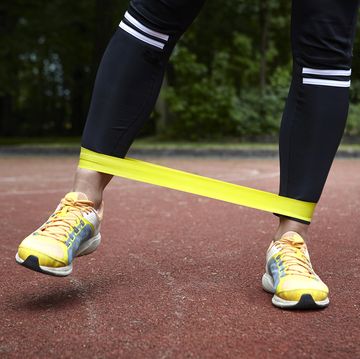One of the best exercises is one people often botch. But not you, not anymore. We asked Kyle Dobbs, personal training manager at the Wright Fit gym in New York City, to share four ways to utilize the bread-and-butter exercise, whatever your workout intent.
If you want to lose weight: You need high volume to amp the muscle-building, fat-burning effect. Once or twice a week, perform six sets of five reps of a loaded squat (goblet or back) at 50 to 60 percent of max weight. (Choose a load that feels challenging by the third rep of each set.)
If you want to run faster: Build power with heavy front squats (75 percent of max weight), three to five sets of three to five reps. On other days, do Bulgarian split squats (a lunge in which your back leg is bent, foot on a bench), three sets of 10 per side. Do each once or twice weekly.
(Ready to meet your running goals? Get personalized race training for every distance with the new My Run Plan app from Runner’s World.)
If you want to reduce back pain: As long as it’s cool with your doc, try slow and controlled front or box squats, three to five sets of five reps. Focus on stabilizing your hips and bracing your abs for each rep—they’re key to strengthening the muscles in your back
If you want to tone up: Back-loaded squats better challenge your posterior chain. Two or three times per week, perform three to five sets of six to 10 reps, at 60 to 70 percent of your max weight. Avoid bouncing and using momentum, and focus on squeezing your glutes with every rep.
Needless to say, squats should never be marketed as a one-size-fits-all exercise for every body type. “Nobody is anatomically perfect like Da Vinci’s diagrams,” says physical therapist and certified strength and conditioning specialist Mike Reinold, owner of Champion Physical Therapy and Performance in Boston. While you should play around with all types of squats, tweaking your form to accommodate your body’s restrictions, especially the build of your individual levers (a.k.a. your limbs), can make the move more suitable—and efficient—for you. Check out these eight variations:
Front (Or Goblet) Squat
Best for: Long Torso
More upper body means you’re more likely to lean forward as you lower down. Holding a weight in front of you forces you to shift your own weight back (so you don’t fall over). It distributes the load equally between your glutes and hamstrings and your quads, making it a go-to among professionals.
Box Squat
Best for: Short Legs
Squatting to sit on the edge of a box or bench can ease you into a deeper stance than your legs will allow, and eliminate fear of injury. (The bench is there to support you.)
(Tone up, beat stress, and feel great with Rodale's new With Yoga DVD.)
Banded Squat
Best for: Knee Valgus (when your knees rotate slightly inward)
Placing a looped resistance band around your thighs encourages you to assume a more parallel position. As the band pulls your knees in, your brain cues your hip muscles to work harder to counteract the movement.
Related: Exactly How To Build Muscle And Lose Fat At The Same Time
Back Squat
Best for: Short Torso
Holding a bar against your shoulders—particularly for those who are short to average height (5’4”)—better distributes weight to the posterior chain without overstressing your teeny lower back.
Sumo Squat
Best for: Tight Hips
Separating your feet more than shoulder-width apart and turning your toes outward help isolate the posterior chain and inner thigh area—and the width opens up room for your pelvis to dip low.
Heel-Elevated Squat
Best for: Flat Feet
The lack of an arch makes throwing your weight into your heels rather difficult. Lifting your heels can help redistribute weight backward, where it belongs, making each rep more effective.
Toes-Out Squat
Best for: Long Legs
Pointing your toes out to 45 degrees (not as extreme as a sumo stance) can give your hips more space to squat lower, as a lengthy lower half makes it tougher to get close to the ground. (Be sure to keep your knees aligned with your middle toe.)
Related: What Happens to Your Body When You Do the Same Workout Over and Over Again
Dumbell Squats
Best for: Asymmetry
Holding a weight at each side as you lower into your squat helps you instantly spot and correct any side leaning: If one dumbbell is closer to the ground than the other, something is clearly off. Work on evening out the weights and, in turn, your body.

